It’s all about the speciality options in hot beverages today, as younger shoppers demand barista-style coffees and health-boosting teas.
In Britain, tea remains the second most consumed drink after tap water, with 84% of Brits drinking tea and herbal infusions every day. That’s a remarkable 165 million cups drunk daily (UK Tea and Infusions Association).
“Tea is consumed by 90% of households, so it’s a key distress and top-up item in convenience stores,” adds Nick Widdowson, Partners for Growth merchandising and creative controller.
So the message is clear: tea is big business. But the humble tea bag now comes in many varieties, so what are the top picks and are c-store retailers missing any tricks?
Impulse stores have the highest concentration of black tea in the mix, where it accounts for 93.4% of tea sales, compared with grocery multiples at 78.1% (AC Nielsen, 14 July 2018). C-stores are right to dedicate good space to black tea as it accounts for 85% volume of the total category (52 w/e 13 August 2017 Kantar Worldpanel). However, it’s the smaller sub-segments of the category that offer the growth.
In impulse, value growth is coming from everyday black decaf, up 4.8%, fruit and herbal up, 7.8%, green teas, up 11.2%, and Redbush, up 1.2% (AC Nielsen 11 August 2018).
“The standard tea bag is a big part of our business, but it’s the speciality and fruit teas which are seeing growth,” says Gregory Cochrane, of Eurospar Binnian Fresh Food Hall, in Kilkeel.
“In our store, fruit is up 19% and speciality is up 7%.”
Gregory’s sales are in line with the wider market, in which the speciality black tea segment is seeing strong growth in terms of value (+7%) and volume (+9%), (Kantar Worldpanel, Total GB, 52 w/e 15 July 2018).
Adele Ward, Clipper Teas brand controller at Wessanen UK, says consumers are increasingly looking for top quality teas that can tick all the boxes: great taste; ethical sourcing; a strong brand identity; and high quality, natural ingredients. She says these needs are driving premiumisation in the category.
Ward says the infusions market is growing in popularity, especially with younger consumers who have not grown up with such a strong black tea habit as the older generations. “Younger consumers tend to have a broader repertoire and are more experimental when it comes to their tea choices,” says Ward, “which is why retailers should look to green, herbal, or fruit infusions to help build category sales.
“Fruit, herbal, green and even decaffeinated teas are growth opportunities, as they are usually bought in addition to normal tea.”
Trends - Tea just got cool
Retailer Gregory Cochrane says the next big innovation to watch in the tea aisle is Tetley’s cold infusions, which have just been added to his planogram.
Tetley says 2017 saw a major shift in the UK’s drinking habits, with servings of cold drinks outselling servings of hot for the first time.
Therefore, the brand has launched a range of fruit and herbal infusions developed specially to be brewed in cold water, on the go in drink bottles, or at leisure as a long cool drink (July 2018).
Tetley Cold Infusions includes four flavours: raspberry & cranberry; passionfruit & mango; orange & peach; and mint, lemon & cucumber.
Each infusion contains small pieces of real fruit, with two calories per 100ml and free from caffeine, artificial flavours, added sugar and sweeteners.
Sabrina Torrens, senior brand marketing manager for Tetley, says: “As a strong brand this is where shoppers expect to find Tetley, but we are not competing with hot beverages, rather seeking to fill a gap in the flavoured water category that is currently not delivering on natural, no-sugar drinks at an affordable price.”
Tetley also recently introduced a new pack format for its green teas and Supers. Available now, the new design gives greater visibility on shelf. The new look features a flip-top pack with the flavours and vitamin content more clearly displayed.
The carton is slimmer, which means 25% more product can be put into the same shelf space.
The bags themselves are packed in re-sealable packs for long-lasting freshness, and with no overwrap the packaging is now 100% recyclable.
Natural benefits
It’s not just interesting flavours that get younger shoppers pulling out their purses, though. According to a study by Kantar (14 July 2018), 31% of consumers select products for their health benefits, naturalness and positive nutritional content.
It’s tea’s good fit with health that is benefiting sales in the many sub-categories which offer shoppers a warm drink without any calories. This trend has led to the growth of the functional teas category, with products containing added vitamins and other health-boosting ingredients.
Simon Kershaw, category marketing manager for Typhoo Tea, says these healthy options have brought younger shoppers into the tea category. He says: “More than 34% of green tea and fruit and herbal drinkers are under the age of 44 (Kantar Worldpanel Total GB 52 w/e 15 July 2018) and it’s this experiential group which is changing market demands.”
Gregory has put some teas marketed purely on their health benefits into the health section of his store. “Within our health and wellbeing section we’ve started selling the Twinings Super Blends which are all named ‘glow’, ‘energise’, ‘defense’, ‘sleep’ and so on. These are almost a whole new category within tea.”
Tetley Supers was the first range of functional teas with added vitamins and EFSA-approved health claims, ranging from immune system support to reducing tiredness and fatigue. Spanning Green Tea, Fruit and Herbal and new Super Squash, the Tetley Supers range includes 20 variants with seven different health benefits.
Mark Canniford, owner of Spar Weston-super-Mare, has noticed their growing popularity. “I’ve noticed the Twinings flavoured tea range is seeing more sales and I think this is due to the health associations. We sell a lot of chamomile and green tea, too, which are both seen as being good for you.”
Ward explains the health benefits surrounding these other tea options which shoppers have taken on board: “Green teas can give a good dose of antioxidants and can be known to have a positive impact on our metabolism, blood pressure and cholesterol levels, among other great benefits to our overall wellbeing. Our organic green tea offers a clean and pure hot drink to help kickstart the day.”
Oddly, Gregory has found that there are so many different fruity teas offering health benefits that they’ve even eclipsed green teas.
“What I find surprising is that green tea is down 8%. You’d expect that to be up with the fruit tea, but I think people are moving over to the fruit and speciality options because the flavour options and range is so extensive, and nowadays the fruit flavours often offer additional health benefits which appeal to those customers who are very health conscious and who previously bought only green.”
Harvey agrees that the fruit and herbal tea category has gained a lot of attention recently and he believes much of this is due to consumers looking for caffeine-free options, or widening their drinks repertoire.
Harvey adds that this growing interest in health has led to an increase in purchases of decaf tea. He says: “Decaf and naturally caffeine-free options have increased in popularity, with customers willing to pay more as they see these options as permissible treats. Decaf tea sales are up 8.6% this year and Yorkshire Tea Decaf is driving category growth and outperforming the sector with sales up 24.8% (IRI 52 w/e 23 June 2018).”
Peter Dries, director of customer and shopper marketing for Tetley, points out that teas with added health benefits tick two boxes as they offer health benefits, but are also perceived as offering better value for money. “With tighter budgets, shoppers are becoming more demanding of the products they buy, and higher price products have to be matched with desired product benefits. We know that the greater the number of product benefits that match shoppers’ desires, the more comfortable they are with paying a little more for the product.”
With value for money being such a high priority for the modern shopper, pricemarks have an important role as they demonstrate value and drive rate of sale. Dries adds that pricemarked packs of Tetley Green Pure and Green Lemon 20s at £1.49 help attract interest and encourage trial of these higher-value teas.
Angela Prescott, store manager of Spar Roe Lane in Southport, says tea bags fly out the store when they go on promotion as shoppers are always happy to stock up on this cupboard staple when the price is right.
“We had Twinings tea on for £1 by the tills and people would buy two or three at a time on impulse. That’s a great basket spend boost. It’s an essential, so they know they will need them eventually.”
Dries says brands are the big players in the tea category. “Relative to other categories own label is weak in tea and tea brands are a major influence when deciding what to buy. Some 87% of shoppers say that brands are an important consideration when buying tea.”
Chaz Chahal, owner of two Simply Fresh and two Costcutter stores in Worcestershire, agrees that the tea category is very much driven by brands as people know exactly what they like when it comes to their daily brew.
“People definitely stick to the brands they like,” says Chaz. “There’s a distinct taste difference between brands so that’s why people are quite particular.”
Adding to the brand argument, Mark also finds that tea sales in his store are strongly influenced by advertising. “At the moment we are selling quite a bit of Yorkshire Tea because it’s being advertised. People do seem to be drawn to what they’re seeing on TV.”
Partners for Growth (PfG) points out that within normal tea, 80s packs have the most loyal shoppers but, at the same time, tea shoppers are brand loyal and often would rather choose a larger pack of their favourite brand than switch to an alternative.
PfG advises retailers to allow for regional differences when putting their range together. For example, London and Southern England over-trade in the smaller tea sectors of fruit & herbal, green and speciality, while Northern regions have the strongest share in normal tea.
Retailers should also consider whether they are selling ethical products as this is another growing shopper concern.
Noel Clarke, vice-president Refreshments at Unilever UK, points out that Brits are becoming more aware about our environmental footprint, which has led to a deeper understanding around provenance and ethics. Last year ethical spending in the UK grew by 3.2% to a record high of £81.3bn, as consumers became more selective with their purchase (Ethical Markets Report 2017 – The Ethical Consumer).
Clarke says: “Within the past 12 months we’ve seen an increased awareness about the impact of plastic on the environment as well as the importance of recycling, and consumers are looking to brands to play their part.”
With this ambition in mind, PG Tips tea bags has switched to 100% plant-based material, meaning that to-date, PG tips has produced more than over 500 million new tea bags made from a renewable and fully biodegradable source.
To bring the PG Tips brand further into the modern era, Unilever has created a product to appeal to those wanting their tea on the go, PG2Go. Featuring recyclable paper cups that contain instant tea with milk powder, all consumers need to do is add hot water, stir and enjoy.
Based on insight that 50% of British holidaymakers take tea on holiday with them, PG Tips has also launched holiday packs. Available in a resealable pouch of 20, the travel pouches encourage tea consumption away from home.
These innovations within the black tea sector will be greatly appreciated by c-store retailers. As Mark Canniford points out, there’s little innovation and interesting NPD in the category: “It’s a tough category to get a lot more out of. People either drink tea or they don’t, and if they do then they aren’t going to stop so the category really doesn’t change much.”
Five things you didn’t know about tea
Do green and black teas come from different plants? No, they both come from the same plant, known by its botanical name Camellia sinensis.
How do you produce decaffeinated tea? Simply by “washing” the tea leaves towards the end of the production process in an organic solvent. The method is strictly governed by legal limits.
How many varieties of tea are there?
UK Tea & Infusions Association estimates about 1,500 varieties of Camellia sinensis.
Is green tea better for you than black tea?
Both varieties come from the plant Camellia sinensis and both have similar amounts of antioxidants and minerals.
Why does tea refresh you in hot weather?
It simply raises the body temperature momentarily, you perspire and the perspiration on your skin creates a cooling effect. Cold drinks quench your thirst, but do not reduce your core temperature.
All change for coffee
It’s a different story for coffee, however, which is evolving quite quickly.
The number of cups of coffee drunk each day is estimated at 70 million (UK Tea and Infusions Association), leaving the coffee market standing at more than £1bn, with roast and ground coffee sales up 6% in value versus the same period last year (Nielsen MAT 14 July 2018) as more consumers are looking for quality coffee at home.
According to the Centre for Economics and Business Research (CEBR) 2018 report, UK coffee consumption in and out of the home has increased by well over 30% in the past decade, surging from 70 million to 95 million cups of coffee every day.
In a CEBR survey of 2,000 adults in the UK, the average person was consuming about two cups of coffee a day and 65% of coffee drinkers consumed coffee at home.
Chris Stemman, executive director of the British Coffee Association, says: “In the past decade we’ve gone from a country of tea sippers who enjoy the occasional instant coffee, to a nation of seasoned coffee connoisseurs exploring a large variety of roast and ground blends. Coffee consumption has boomed across the UK and with so many choices on offer, both at home and on the high street, this increase is not surprising.”
Although as a nation we consume about two cups a day, the CEBR report shows that the average number of cups varies among the age groups, with the average number becoming slightly higher as the consumer gets older.
Despite older shoppers drinking more, millennials (20-37) contribute to 50% of all the coffee consumed in coffee shops, bars or restaurants, compared with only 12% by those over the age of 72. Millennials are least likely to drink their coffee at home (18%) compared with over-72s who make up almost a third of at-home coffee drinkers.
Thankfully, business from the younger audience is percolating into the off-trade, too. It’s due to millennials’ heightened interest in high-quality brews that ground coffee and single-serve coffee pods have seen growth as people want to create a quality caffeine hit at home. Shoppers aged 16–34 account for 16% of all buyers of these types of products (Kantar Worldpanel, August 2016).
As consumers trade up, mainstream coffee is seeing long-term decline, while the growth is coming from mixes and specialities (20.5%), microground instant coffees (15.9%) and single-serve capsules and pods for coffee machines (5.9%).
The sales benefit of this trend is clear with cost per cup being just 2.8p in mainstream coffee increasing to a decent 21p per cup in specialities (Nielsen MAT 19 May 2018 and Kantar Worldpanel 20 May 2018).
Angela has recently started selling premium-flavoured coffee brand Little’s at Spar Roe Lane and she has been amazed by how popular this pricier product is.
She says: “We’ve got the full range of flavours, from hazelnut, to French vanilla, to caramel, and they are all £2.99 for a small 50g jar, which is quite a lot but they are really popular.”
Sandeep Bains, owner of Simply Fresh, Faversham, Kent, has noticed his younger shoppers opting for the higher-quality options and the coffee pods for putting into machines. “People are gradually moving on to the better-quality coffee and the pods are becoming more popular. It’s definitely the younger shoppers, certainly those under-40, while the elderly shoppers stick to their standard Nescafé.”
Gregory Cochrane says this move towards higher quality options is the biggest driver in the coffee category.
“The biggest thing we are seeing in this category is shoppers looking to get that coffee shop experience, and coffee is even stealing some share from tea as people are trading up to that experience at home.”
Gregory points out that those products made by coffee shop brands tend to sell well thanks to their brand recognition. “The Costa products are popular. Shoppers want to try to match their coffee shop experience so they are drawn to well-known coffee shop brands.
“Older customers are still the standard instant drinkers, while millennials are coming along wanting that premium experience that they’ve enjoyed in coffee shops. It’s understandable as I know I find it hard to go back to a filtered coffee after trying barista coffees as the difference in taste is very noticeable. Younger shoppers also want more interesting drinks, which is why we are also seeing growth in our mix sachets.”
In Gregory’s store, value coffee accounts for just 10% of coffee sales and standard accounts for 31%, (down 15%), while premium has taken over to account for 43% (up 40%) and super-premium accounts for 16% (up by an impressive 78%). The products which offer shoppers interesting single-serve options are hitting the spot, with sales of coffee mix sachets up 43% and coffee capsules up 49%.
Five things you didn’t know about coffee
It takes 42 coffee beans to make a single shot of coffee
Coffee is technically a seed, not a bean. They are commonly called beans because of their resemblance to beans
Coffee was originally eaten, rather than drunk. It wasn’t until the 13th century that people began to roast coffee beans
Coffee comes from a red cherry-like fruit which is grown on bushes
Robusta and Arabica are the two beans that make up almost all of the coffee we consume in the UK. Arabica has a slightly lower caffeine content than Robusta and prefers to be grown at higher altitudes. Robusta, meanwhile, grows at lower altitudes and has a slightly more bitter taste.
Source: BCA
Demand for quality
Mark, too, has changed his hot beverages to cater to those wanting higher quality coffee. “With coffee, we’ve reduced our range of standard instant coffee down to just Nescafé and Kenco and a Gold Blend, but we have four types of the higher quality ground coffee, which is quite a lot for a c-store.
“The standard stuff just doesn’t go as well now, and unless it’s on promotion or has a price flash then it doesn’t sell as those shoppers are looking for good value for money.
“I find that Eastern European shoppers are particularly happy to spend a bit more on coffee.”
Mark adds that those looking for the higher quality ground coffee aren’t concerned by price. He has also tried to sell coffee pods, but he said he had no luck, which surprised him as he knows how good these products taste.
“I have a Nespresso machine at home and it makes excellent coffee. I buy the pods from the local Nespresso store.”
Sandeep does sell the pods in his store, but he finds it hard to sell them at full price. He says shoppers are very savvy about when they’ll buy the top quality products.
“I sell loads of the Tassimo pods when they’re on promotion, but as soon as they come off they are seen as being too expensive. I tend to try to stock up as much as possible when they are on promotion so I can pass on the savings to customers for as long as possible.”
Chaz Chahal has noticed his shoppers happily swapping brands when they see a different one on promotion. “I think that the big companies like to do a lot of promotions because they know they encourage shoppers to try their brand and taste how good it is, and then hope they get repeat purchases. From what I’ve seen people will just buy whatever’s on promotion.”
Nicole Hartnell, marketing manager at Lyons Coffee, maintains that although consumers are continuing to look for quality, fresh products, value for money is also “hugely important” in the current climate.
And this is where c-store retailers should be able to gain some sales over the coffee shops, she suggests.
She says: “Frugal shoppers are more frequently opting to drink fresh coffee at home without the price tag associated with out-of-home coffee. However, with coffee drinkers not wanting to compromise on quality, it’s important for brands and retailers to offer a variety of options and formats to suit different price points and tastes.”
Depending on your demographic, sometimes shoppers’ need for value can be a major hindrance to c-stores. Alan Carr, owner of a Nisa store in Newport, Essex, says his shoppers all go to the local Aldi for their instant coffee.
He explains: “I know that Aldi does a lot of good deals on their own-brand coffee and people seem to like that, so I think I lose a lot of shoppers to them.”
However Alan does find that his big boxes of tea and coffee sell well to the local offices and schools as office workers and staff will pop to his shop on their way into work for extra supplies.
What’s more, with millennials being so health focused, coffee could be seen as their ideal drink, suggests Dr Sarah Jarvis, clinical director of health information website Patient.info.
“There is clear evidence to show that in moderation, about three to five cups per day for most people (about 400mg of caffeine), coffee can contribute to a healthy, balanced diet,” she explains. “Coffee is also associated with certain health benefits such as improving alertness, physical performance levels, decreasing risk of cognitive decline and even reducing risks of some cancers.”
Gregory says he wants to reduce the space he devotes to green tea, hot chocolate and malted drinks and use this space for premium coffee, capsules and single serves.
The take-home messages are that tea remains the number one beverage in the UK, but with café culture continuing to influence and excite consumers, tea brands need to evolve in order to keep up.
Younger shoppers are becoming coffee connoissseurs and while they may be drinking less than older shoppers, they are willing to pay more for that coffee shop experience in their own home.
It’s due to this premiumisation that coffee is stealing some share from tea. So make sure to sell premium instant, capsules and single-serve mixes, and keep an eye out for further innovation.
Innovation - Keeping the millennials happy
With millennials’ demands having such an impact on the coffee market, Lavazza has been working hard to ensure its brands stay on trend, says head of marketing Francesco Varvaro.
He says: “Premiumisation is a key market trend with shoppers, particularly millennials, looking for quality products to replicate their high-street experience at home, as well as products that are convenient to match their ‘always on’ lifestyle.”
In response to this, Lavazza launched Prontissimo premium micro-ground instant coffee in the off-trade market in 2016.
Varvaro says Prontissimo Classico is a combination of 90% instant coffee and 10% ground coffee. “Smooth and well-balanced, with delicate caramel notes, the product results in a quality serve which is both deep and authentic in flavour,” Varvaro says.
Another example that meets this market trend is the recently relaunched Carte Noire, after Lavazza took over the production licence from Jacobs Douwe Egberts in March.
The range was introduced in June in two variants – Carte Noire Classique Instant and Carte Noire Decafeine Instant – available across five skus including a 100g format in both regular and £3.99 pricemarked pack.
In addition, and as a response to the brand’s desire to accelerate premiumisation in hot beverages, Lavazza has grown its A Modo Mio pods range steadily since launch in 2008, and its A Modo Mio Capsules remain Lavazza’s fastest growing category in the UK.
Varvaro says that despite instant coffee taking up the majority of total sales in convenience, independent stores should still offer a wider roast and ground selection including Nespresso-compatible capsules, as well as beans.
He adds: “We suggest convenience stores offer a range of granules, freeze-dried, such as the Carte Noire Classique and Carte Noire Decafeine, and micro ground, such as Lavazza Prontissimo, speciality and ground coffee, for example, Lavazza Qualità Rossa 250g.”





















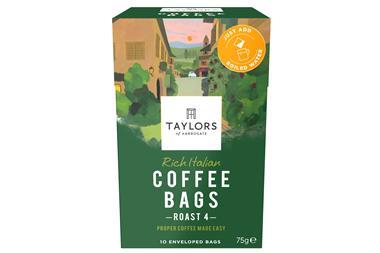
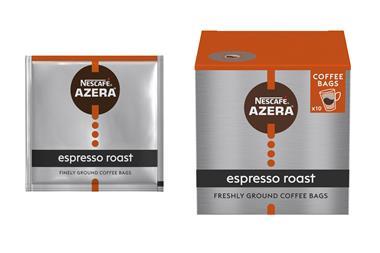
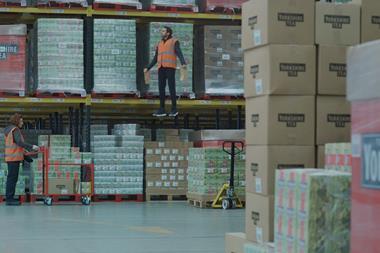

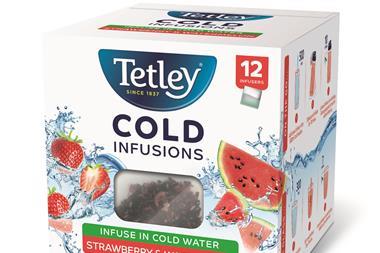

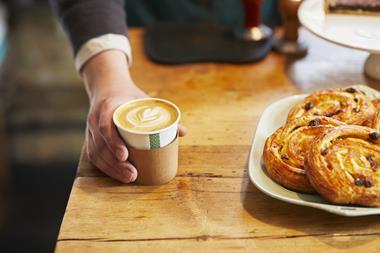


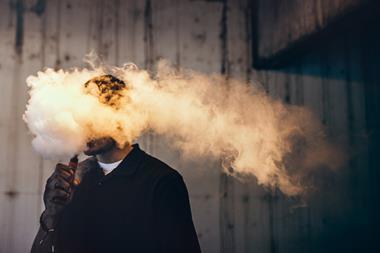

No comments yet